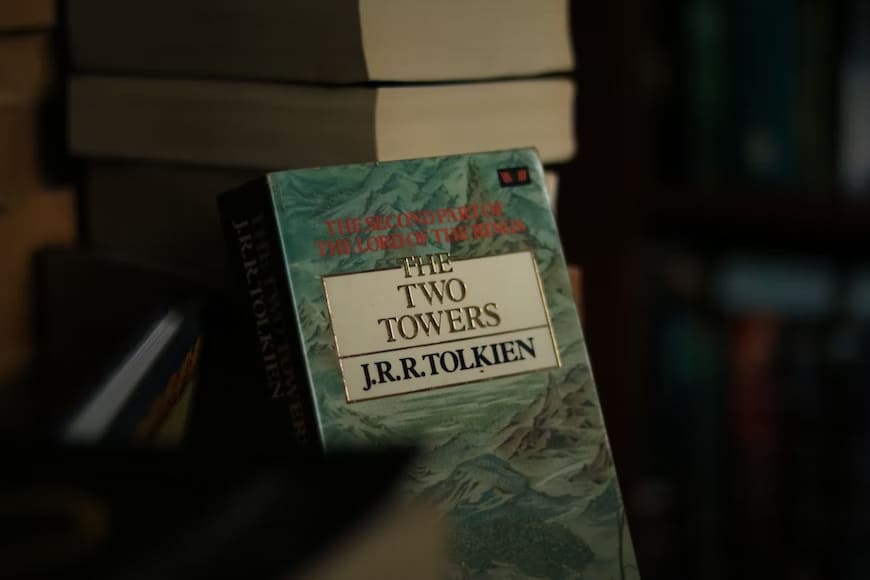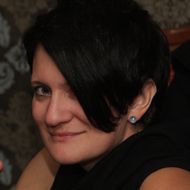Life and Fiction of J.R.R. Tolkien

“Fantasy is hardly an escape from reality. It's a way of understanding it.”
Lloyd Alexander
Welcome to chapter one…
Once upon a time there lived a man who was so perceptive of the world around him that he created another realm. This realm reflected the best and the worst of the reality it was based on. However, it had a bigger load of magic, and adventures happened there far more often.
In other words, some one hundred years ago in his books John Ronald Reuel Tolkien gave life to the land of Middle-earth and its creatures, thus radically changing the role of the fantasy motif in literature and people’s viewpoint upon fiction.
In this course we are going to talk about various factors that influenced and inspired Tolkien to find his legendary land the way we know it today. Events, stories, people, beliefs… we will dive deep in every element and solve one of the greatest puzzles ever created bit by bit, article by article.
It is high time to begin, my friend! Take your seat, pour yourself a grand cuppa tea and prepare for a wonderful journey through time and worlds!
John R.R. Tolkien was born on the 3rd of January 1892 in South Africa. Several years later his family moved back to England - their home country.
Throughout his life Tolkien “tried on” many social roles along with the applied responsibilities. Some he enjoyed and cherished, others brought him suffering and pain. A meticulous reader will find traces of each of Tolkien’s life-states in his works.
Yet, the most important fact is that he never was a full-time writer. The creation of his books can even be called a leisure activity as he did it all in his free time. This can explain why it took Tolkien almost all his life to complete the world of Middle-earth.
So, who J.R.R. Tolkien actually was?
First of all, he was a genuinely academic person. Besides being a writer, he was a translator, a philologist and even a professor of Anglo-Saxon and the English Language and Literature in Oxford.
Secondly, he was a loving husband and father. Tolkien and his beloved wife Edith Bratt had four children: three boys and a girl.
Thirdly, he was an officer during the Great War and a participant of the terrible Battle on the Somme. These traumatic events left a mark on Tolkien’s perception of the world as well as his literary creations.
And lastly, John R.R. Tolkien was a great friend and always sought company among like-minded people.
Beyond that, Tolkien was a gifted person: as a small child he was already used to writing fantasy stories and making up his own languages. At that time he was practically building the foundation for the literary masterpieces he would write in his adulthood.
There were several traits of Tolkien's personality and worldview that influenced his works at a great extent:
To begin with, the abilities of his imagination were truly amazing. His consciousness was so mighty as to shape and modify numerous ideas and fantasies in extremely detailed and precise manner. The way events of Tolkien’s life and reflections of his academic interests are represented in his literary creations shows that the actual level of objectiveness in our world didn’t satisfy him. Tolkien extended and supplemented the reality he lived in masterfully and exquisitely. Almost with some kind of an elvish air.
Moreover, he was a Catholic and really devoted to his religion and its moral values. The topic of Christianity is fundamental in Tolkien’s literary pieces about Middle-earth. The motif of Christianity can be traced in every situation and every character: how the good and the evil are perceived, how antagonists decide to carry the burden that is not their own to save lives of others and many, many more. It is truly an endless list.
In Lord of the Rings, for instance, we can find an imagery of the Holy Trinity in the faces of Gendalf, Frodo and Aragorn and as they symbolise the Prophetic, Priestly and Kingly features of Jesus Christ respectively.
And finally, Tolkien was madly in love with his wife. Their love story was really one of a kind. She was his Muse and he worshipped her. Tolkien even invented characters that embodied him and his spouse in the realm of Middle-earth: Beren, a mortal man, and Lúthien, a daughter of the King of Elves. Unlike his heroes, who were doomed to be separated and suffer from their unique love, John and Edith lived a very long and happy life together. Tolkien adapted the way he and his wife felt for each other as the greatest and truest love and blessed only the most worthy of his heroes with such.
Now, let us turn to the centrepiece of Tolkien’s creation - Middle-earth itself. There is a number of questions that should be asked when getting acquainted with this realm:
when…?
how…?
and what’s used…?
Without further delay shall we answer them!
When…
did Tolkien begin his journey of creating Middle-earth?
For the very first time Middle-earth appeared on the pages of the children’s story “The Hobbit, or There and Back Again” in 1937. According to Tolkien himself, he started the creation of the book with writing down a famous opening line:
“In a hole in the ground there lived a hobbit”
on a blank piece of paper when grading his students' compositions.
The exact date of this occurrence is unknown, however, literary critics suppose that it was somewhere in the beginning of the 1930s. By that time Tolkien was in possession of a great collection of both unique fiction tales that he wrote for his children and analytical academic interpretations of Old English epic.
In its initial drafts Middle-earth wasn’t the one that we know today. It is widely acknowledged that significant locations of the realm were inspired by real places but back when The Hobbit was at the stage of development Tolkien didn’t even change the names of some areas. For instance, you could come across desert Gobi or mountains Hindu Kush in the first sketches of the book.
The draft version is believed to have been finished in 1933, and Tolkien’s children rated it highly. Several years later, in 1937, after certain modifications the story was published and became a huge success.
It would be true to say that John R.R.Tolkien was creating Middle-earth throughout his whole lifetime. From his early childhood to the very last days he refined his fantasy universe, his brainchild.
How…
did Middle-earth evolve over time in the legendarium?
When talking about the emergence of Middle-earth and generally about Tolkien’s masterpieces, 3 main books should be named: The Hobbit, or There and Back Again (1937), the Lord of the Rings (1954) and Silmarillion (1977). If the first two pieces are fairly familiar to everybody, the name of the last one usually puzzles the newcomers. Silmarillion consists of various interconnected tales and legends that were edited and published posthumously by Christopher Tolkien - the son of the author. Despite coming out so late, this book plays a vital role in disclosure of the development of Tolkien’s realm along with its history.
First and foremost, Middle-earth was a continent. It existed in a world called Arda.
There were Four known Ages in the history of Arda. The adventures of both Bilbo and Frodo Baggins occurred in the Third Age, thus, making this period the most subtly described one. Tolkien implemented allusions to the previous ages in the Hobbit and the LOTR through numerous songs, tales and legends narrated to the wayfarers throughout their journeys. But ,nevertheless, the plot of these literary pieces unfolds only in the Third Age and gives limited information about what was prior.
Silmarillion, on the other hand, was created purely to tell the story of Arda and Middle-earth specifically; to shed the light on how the world appeared, who were the ancestors of the already known peoples and why some of them were not on good terms.
But what about the Fourth Age? There’s not much to say about it, however, it is thought to have started after the last events named in the Lord of the Rings. All three books served as the basis for these assumptions, containing ambiguous prophecies and diverse tales. Mere hints is all that Tolkien’s followers were left with.
To overview shortly the general picture of Arda over the time:
- The First Age was the age of Elvish ruling;
- The Second and the Third Ages were the periods of diversity of population and kingdoms;
- The Fourth Age was the era of Human ruling.
If you want to take a closer look at the stages of Arda’s history, I highly suggest checking this link: a website with chronological order of events.
What was used…
to create Middle-earth, its peoples and its history?
To tell the truth, there is hardly anyone that could give a proper answer to this question. As it was already mentioned, Tolkien was a person of outstanding talent and reflecting capacity. There is no doubt that his imagination and personal experiences laid the foundation for his works. But along with these key elements some other can be detected:
- different mythologies (mostly Greek and Norse);
- old languages;
- Biblical references;
- certain historical events;
- other fundamental literary pieces
etc…
The query of the origin of Middle-earth’s constituents is the one that inspired me to endeavour creating this course. Throughout the following articles we will analyse the fields of Tolkien’s inspiration and immerse ourselves in the world of this extraordinary person so as to understand what incentivised him to invent his legendarium.
I thank you for reading this piece and “may the wind under your wings bear you where the sun sails and the moon walks”!
Karima Lakekhal
References
- Shippey T. The road to Middle-earth: how JRR Tolkien created a new mythology. – HMH, 2014.
- Biography [Electronic resource] // The Tolkien Estate. 2021.
- Smith R. Tolkien the storyteller //English Today. – 2006. – Т. 22. – №. 1. – pp. 45-50.
- University of Oxford. Tolkien: Maker of Middle Earth [Electronic resource]. Youtube, 2018.
- Shippey T. JRR Tolkien: Author of the century. – HMH, 2014.


